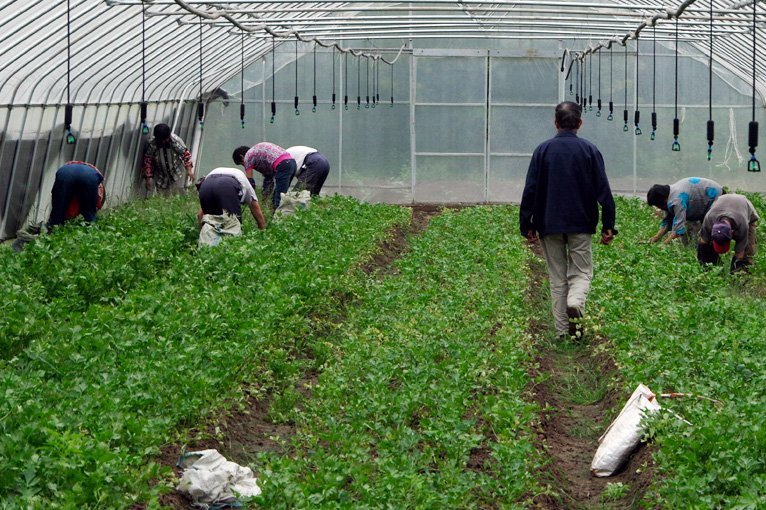Bathua, also known as lamb’s quarters or Chenopodium album, is a green leafy vegetable that is popular in many parts of India. It has long been a part of traditional diets and is enjoyed for its flavour as well as the many health benefits that it contributes. Let’s discuss the advantages of bathua – its nutritional benefit and the farm process in growing this incredible plant – in this post.
Nutritional Benefits of Bathua
Bathua is packed with nutrients. It is rich in vitamins A, C, and K. Vitamin A, C, and K maintain good healthy eyesight, skin and the role of proper immune function, among many other aspects. It also contains minerals such as iron, calcium, and magnesium that contribute to bone health and work towards building strong blood. The high fibre content in bathua aids in digestion and can help prevent constipation.
Bathua is also relatively low in calories; hence, for those seeking to achieve or maintain a healthy weight, it is excellent to make use of. In many ways, bathua can be used in salads, soups, and even cooked dishes. The flavour of the leaves is mildly sour and hence can be added to dishes without overpowering the overall flavour.
Farming Bathua: A Step-by-Step Guide
Farming bathua is not very complicated, and it can be grown in both large and small-scale farms. Here is a simple breakdown of the farming process:
Preparation of Soil
Preparation of the soil is the first and most significant operation of farming bathua. It involves clearing land from weeds and debris. After clearing the land, farmers use a tractor to plough the soil. The ploughing helps in the aeration of the soil and breaks the big lumps to make it favourable for seed sowing. For the best results, the soil should be well-drained and rich in organic matter.
Selection of Seeds
After preparing the soil, farmers also select quality bathua seeds. These seeds should be free from diseases and pest attacks to ensure healthy plant growth. Farmers buy them or take seeds from previous harvests.
Sowing the Seeds
Now that the soil has been prepared, the seeds are sown in rows. This can be done manually or by using a seed drill. Bathua seeds would be best planted during the cooler months as this plant thrives well under moderate temperatures. After sowing, cover the seeds lightly with some soil to shield them.
Irrigation and Fertilization
It also requires constant watering, especially during the initial stages of sowing. Drip irrigation or sprinkler systems provide water to the Bathua plants. Organic fertilizers such as compost or well-rotted manure can be applied for soil fertility.
Weed Control
Weeding can compete with bathua for nutrients and water, so farmers must control it. For this purpose, farmers remove some of it manually. Mulching techniques could suppress it or, alternatively, apply herbicides. Sometimes, safe herbicides are also used, but organic practices are preferred since these can maintain the health of the crop.
Pest and Disease Management
As with any crop, pests and diseases can also target your bathua plants. Inspect the plants regularly and act promptly. You may opt for organic pesticides or attract beneficial insects that devour the harmful bugs for you. Regular inspections will help in catching the problem in its early stages, and hence, you can enjoy a successful harvest.
Harvesting
After a couple of months of growth, Bathua is harvested. The plant leaves are best gathered fresh when tender for the most delicious taste. Harvesting using a Mahindra 415 tractor is easy because it is a highly versatile tractor. It fits with various implements. This tractor is tough and highly efficient in many farming-related activities, making it easy for farmers to harvest crops. This tractor can easily handle the collection and transportation of bathua leaves to markets.
Post-Harvest Processing
Bathua harvested once can be cleaned and sold in packs. It can also be sold fresh in local markets or processed into various products with a longer shelf life, like dried leaves or powders.
Storage
After harvesting, proper storage is crucial to maintain the freshness of bathua. Farmers can store the leaves in cool, dry places to prevent spoilage. Another method would be through airtight containers, and this can also increase the life of the fresh leaves.
Marketing and Distribution
Once the bathua is ready for sale, farmers need to plan how to market their produce. They can sell directly to consumers at local markets or supply to grocery stores and restaurants. In that case, building relationships with buyers from that community can ensure a steady market for their crop.
The Final Words
Bathua is more than just a leafy green; it is a nutritional powerhouse that can enhance any diet. There are so many different health benefits and culinary uses of bathua that it’s no wonder the plant has stayed in favour through the decades. The farming process for bathua is relatively straightforward, requiring careful attention to soil preparation, seed selection, and pest management.
Sustainable farming practices can easily make it possible for farmers to grow bathua commercially while helping to create a healthier community. The next time you cook a dish with bathua, feel great about the hard work that goes into cultivating this wonderful vegetable. Enjoy all the nutritious benefits in your salad, curry, or soup.




